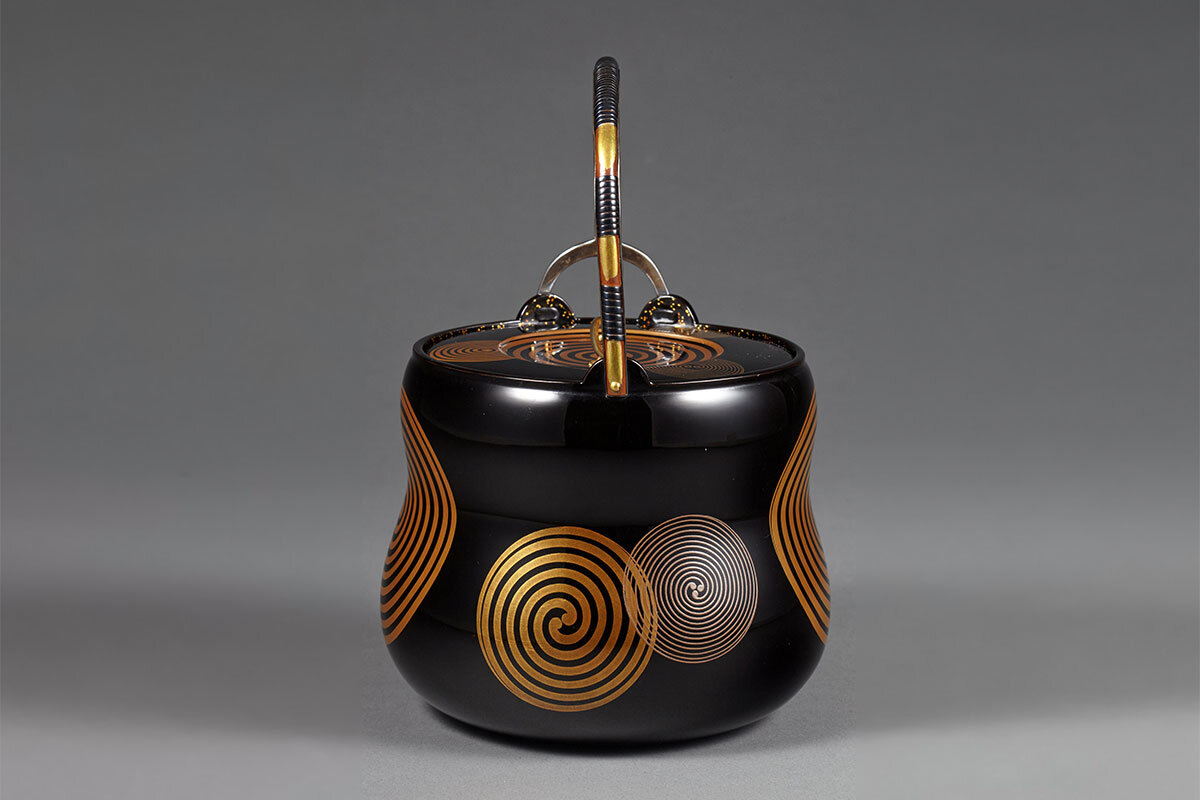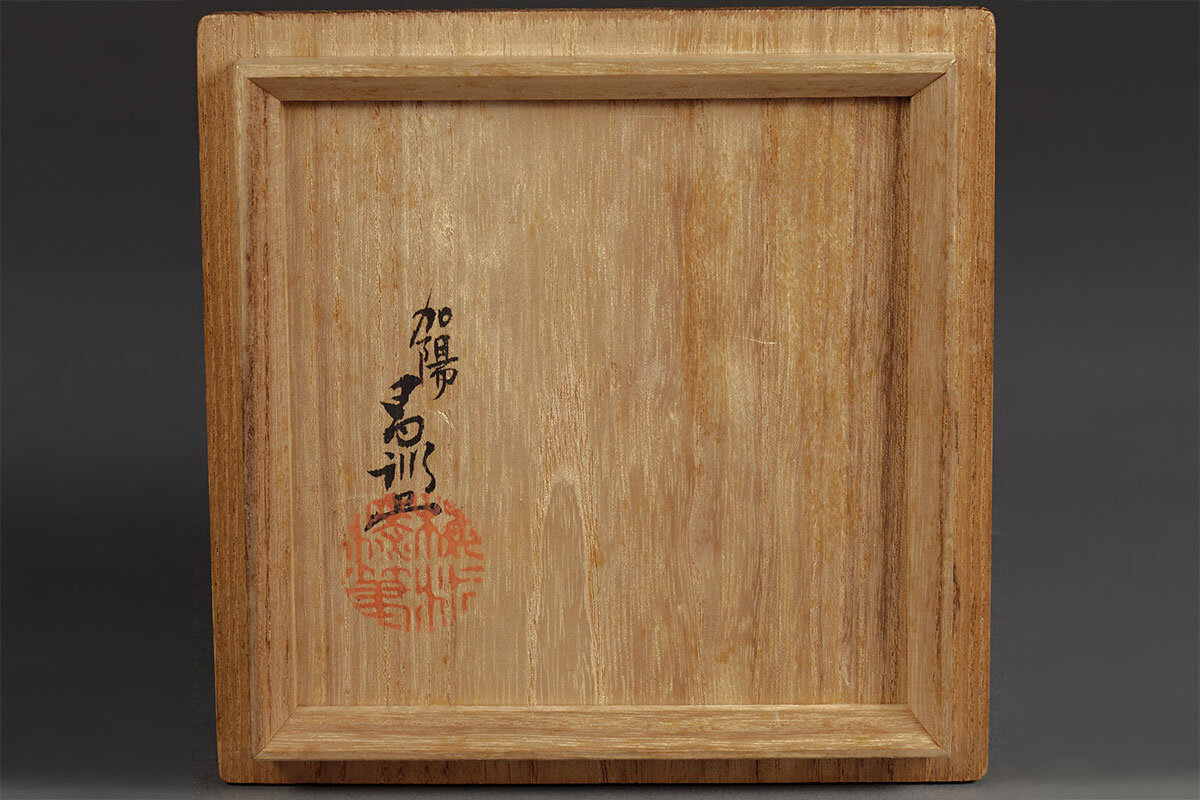MEIJI-TAISHO
TAISHO ERA SAKE EWER BY OGAKI SHOKUN
Choshi or sake rice wine ewer in a gourd-form with a loop-style handle, the exterior decorated in stylized gold whirlpools against a black ground and the lid with pine needle style hardware. Of roiro or mirror-polished black lacquer with gold maki-e whirlpools; the interior of the spout in thick-flaked, gold gyobu nashiji; the interior in two colors of gold nashiji; the pine needle handle on the lid of shibuichi and gilt; and the handle of red bronze splashed with gilt and wrapped with shakudo to mimic rattan, then backed in hammered silver. By Ogaki Shokun (1865 – 1937). Taisho era, circa 1912 – 1926.
With the tomobako or original box, inscribed on the exterior of the lid: Fumaiko Gonomi Uzu Maki-e Kannabe or In the Taste of Lord Fumai, Whirlpool (Motif) Raised Gold Lacquer Sake Ewer; on the reverse signed: Kayo, Shokun and with a kao, and sealed. Kayo refers to Kanazawa in Kaga, where Shokun worked.
Fumai is the tea name adopted by the 7th Matsudaira Lord of Matsue Han, Matsudaira Harusato (1751 – 1818). He acceded to the title at the age of 17 and became famous for reforming the Han’s dismal finances. At the age of 20 started to study tea ceremony and later became famous as a collector of tea implements. Matsudaira Fumai is now chiefly remembered as one of the most famous tea masters of the late Edo period.
Taisho Era Sake Ewer by Ogaki Shokun
Artist Name: Ogaki Shokun
Period: Meiji Taisho
Mediums: Lacquer
Origin Country: Japan
6 ¾” high x 5 ¾” long (from spout to back) x 4 ¾” wide
This piece is no longer available.






